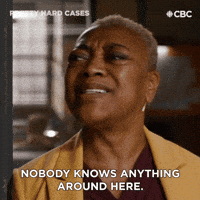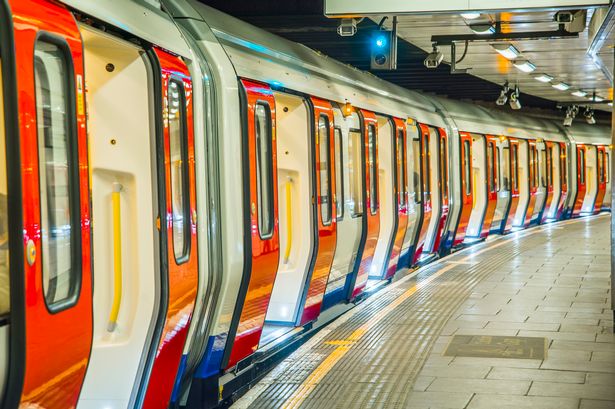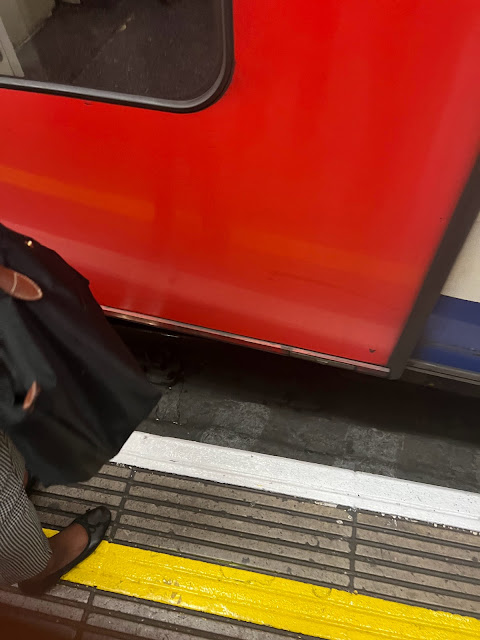It's been 1 year since I moved to London. I lived in other parts of the UK for almost 2 years before that. Here's a tale of the highs and lows and the many mids. Enjoy
First of all FUCK GOOGLE MAPS
Google maps can be a darling when it wants to be, but on other days when it chooses violence, it'd have you moving like your name is Dora and your life ambition is to be the explorer. You'll just find yourself turnioniown. To where? Nowhere! Again FUCK that institution.
Google maps is especially annoying when using buses, particularly when locating bus stops. Remember my terrible, horrible, no good, very bad day? That was sponsored in no small part by Google maps. My remedy? TfL Go app. TfL means Transport for London (a very functional name if you ask me). That's a blessing in disguise when it comes to locating bus stops. Everything else it does is not as good as Google maps.
With trains, Google maps is pretty accurate though. So maybe don't defund them just yet.
To be fair, Google maps is only really bad for bus stops because there's a lot of construction going on in London so some bus stops end up getting closed and on some other days, there are bus diversions. So, it's not always their fault.
Speaking of buses and trains... emmm trains >>>>>>> buses! Periodttt

But buses are cheaper than trains. So what do you want, more money or more sanity?
The bus pricing structure is also A LOT simpler to understand and plan for.
It's £1.65 for every 1 hour on a bus, capped at £4.95 per day. Assuming you swipe into 1 bus at 6:16, if you like swipe into 10 other buses (unlikely that you can physically do this, but you get the point), as long as you do it before 7:16, that trip will be £1.65. And if you need to take 20 buses across 8 hours a day, don't worry; it'll all add up to £4.95.
How are you charged?
The next day by past midnight, you see an alert from TfL on your bank app if you used a contactless bank credit/debit card. If you use an Oyster card, you'll see the balance on the scanner when you tap it to enter buses or exit train stations.
That's another thing, public transport in London does not accept cash.

You either pay with a contactless debit or credit card or an Oyster card. There are some machines by the side though that I think lets tourists buy train tickets with cash. But I'm not sure. That's tourist knowledge; I'm slowly becoming a Londoner now. Put respek on my name!
From the TfL website, it seems paying for trains by cash is more expensive than swiping either Oyster or contactless. You can buy (yes, buy) an Oyster card at most post offices and corner shops. The card costs £5, and you can load it with as much money as you need.
The £5 is like a guarantee kinda thing. If, after your stay in London, you choose to return the card, they'll refund you the £5. The £5 also serves as reserve fuel on your card. You know the fuel you use when your car is running on E or Empty. That's it. If your Oyster card balance is running low in the middle of a trip, don't worry, the reserve £5 might carry you through.
Now let's talk about trains.
2 words to live by: "Lines and Zones"

Lines
There are 11 lines in London. While you don't need to know them all by name, you'll pick up the names eventually. There's the
- Bakerloo Line
- Central Line
- Hammersmith & City Line
- Jubilee Line
- Waterloo & City Line
- Piccadilly Line
- Victoria Line
- Metropolitan Line
- London Overground
- Northern Line
- District Line
- Circle Line
- and the newest line named after... well it's in the name; Elizabeth line.
Most people frequent 3-5 lines, but in my 1 year here, I've ridden 90% of the lines. The cleanest is, of course, the newest, the Elizabeth line.
Trains can make this screeching sound when they're on the tracks. The loudest I've experienced is between the Central and Jubilee line. Jubilee line is cool, though. They have these interesting doors that separate the train from where people stand to board the train. Elizabeth line has those doors too.
This is what most other lines look like
No special door.
Watch your step, though. Or in train English, "mind the gap". Some trains have a giant chasm between the train and the stand. If you're not careful, you, all your family problems, trials, and tribulations can fall into the space.
Let's talk about Zones
There are 6 zones in London, Zone 1-6 (no fancy names here). Zone 1 is the City of London. Zones 2-6 is everywhere else, a.k.a. Greater London. As I said, the bus pricing structure is much more straightforward than trains, so I can't really explain how trains charge. What I can say is Beware of The zone 1 tax!
You can travel from zone 2 to zone 6 for like £1.95, but the moment you cross zone 1 in that journey, that bill goes up to £2.50. If you pass through zone 1 to go from zone 2 to 6, your bill might run up to £3. Even if you go from 1 part of zone 1 to another part of zone 1, even if it's 1 station apart, your bill is automatically £2.50. I call it the zone 1 tax.

How do they know where you've been?
Well, you swipe your card when you enter the train station and swipe it when you leave the train station. With that information, they can reliably estimate the route you took to get from entry to exit and charge you as appropriate. It's a pretty neat trick if you ask me.
You can use the TfL website to calculate how much your trip will cost before you leave by entering your entry and exit stations. I don't know any intuitive way to estimate the cost of your train trip beyond that.
There are maps on all the trains of the specific line you're on and the overall tube and rail network in London. I look at the maps for the specific line from time to time, but the one for the overall rail network is a bit of a lot, so I don't bother with it.
There are almost 300 stations and 11 lines in London. Imagine all of that on 1 map. It can be pretty overwhelming. Even if this is how people in the past lived, I'm not them. Some people still struggle to do this. It's the ghetto, friends; don't do it.
This is where Google maps comes in.
If you input your journey on Google maps, it can tell you with 99% accuracy where you should enter and exit from and which lines you need to move between. I say 99% accuracy because nothing is perfect, but Google maps hasn't failed me yet with their train journeys, so it's pretty much 100 for me.
Google maps can have you mix train and bus trips. Remember the pricing structure I explained. Buses charge £1.65 even if you ride the bus for 1 minute or 59 minutes. And the trains don't charge you by the hour; they charge you by the point of exit and entry. So mixing buses and trains will just make your trip more expensive than it should be.
I personally just pick one and stick to it. If I see I need to use buses for most of the journey, I just use buses. But if it's a mostly train trip, I use trains and walk the rest of the way.

London will turn you into an Israelite. You will WALK! I don't mind it, though. I walk an average of 4-7 hours every week. As someone who doesn't go to the gym, I've fully embraced walking as my source of exercise. It's also a GREAT way to see the city. By walking, I get to see many cool places and take pictures of interesting structures. It's fun for me.
As a serial walker, I know everywhere within a 1-mile diameter of my work and home. And as Kwaku the traveller, this has helped me see a reasonable amount of the city. If you take a picture of yourself somewhere in the City of London, 7 times out of 10, I can tell exactly where that is cos I've walked to many places. Don't test me on this sha 😅 Like I said, it's fun.

Driving in London isn't too bad. I see people do it. But driving in the City of London is the ghetto. Mostly taxis and oligarchs do that shit. Why? The speed limit is 15 miles per hour (24km per hour)! Usain Bolt runs faster than the speed limit 😂 And is a £15 daily congestion charge if you drive within the zone from 7:00-18:00 Monday-Friday and 12:00-18:00 Sat-Sun and on bank holidays. This is why most people use public transport, which is quite reliable.
Paradox
London is a paradox. The city is so small yet so big at the same time. When you go around the city, you begin to notice that many places start to look similar yet different simultaneously. It's a myriad of Deja vus. You feel like you've been there before, but you know you haven't.

It's why nobody really knows anywhere. Ask for directions, and you might hear someone say, "I've never heard of that place in my life". Ask that person, and you'll find out they've been living in London for perhaps 15 years. People only usually know their locus of control. I.e. work, school, socials etc. And remember, Google maps can be hit or miss, so, tears.
As a Londoner in training, I try to help anyone who asks me for directions. Especially my kin folk. Even if it means interrupting my trip and using my own maps app to help. I've been like them before, so I empathise. And as I said, nobody really knows anywhere, so chances are, I may need directions too in the future, and I hope someone helps me too. Paying it forward and alladat.

City of London vs Greater London vs London outskirts (traveller towns)
When someone says they live in London, ask where cos there are many Londons. Frens, Stay woke. The city of London is a separate district from the rest of London. They have their own police, government, and tax structure separate from the rest of London. The only people living in the city are multi-millionaires, oligarchs, or people willing and able to doll out the exorbitant rent to live very close to work.
Greater London is where most other people live. This is zone 2-6. Gentrification is a common theme in many parts of Greater London these days. Plenty large-scale constructions of apartment buildings all over greater London giving birth to the expensive studio, 1, 2+ bedroom apartments making renting in London more expensive.
Then there's London outskirts or traveller towns. This is where places like Essex fall into. Many (more like most) people who work in London and have decided to buy houses go to these towns to get larger houses for lower prices.
Since they're in the outskirts, it's quite the journey for many of these people to find their way into London for work each day. That's why many are grateful for the hybrid work (work from home + in office) that COVID brought. But yea, London outskirts are parts of London but not really. If you know what I mean.
House Hunting
It's not too hard finding a place to rent in London. If you're looking for a shared house/apartment, you can use City rooms or spare rooms. If you're looking for apartments/houses, Zoopla, Openrent, and Gumtree are the places to go. These are all websites you can check. The websites have agent phone numbers you can call.
A simple google search like "2 bedroom flat to rent in London" can help you find what you need. Depending on the time of the year you start looking, sometimes, you can find places ready for you to move in the same day.
But if you want to increase your chances of finding the best, you should start looking 2 months before. And always go for in-person viewing. Some pictures will have you doing what I ordered vs what I got.
With renting, you often find that you get what you pay for. If it's really too cheap relative to everywhere else, read the terms and conditions well. If the pictures of the apartment include too much street footage, the place is probably mid.
Some great deals come on the market though. Great price for a great place. If you're lucky, you'll get one of those. Most of us just settle for good enough.
Some landlords do credit checks or require 4-6 weeks of rent as the security deposit. So prepare. Try not to break your contract. If your contract is for 1 year, you must stay for that time. If you leave before the end, you might have to pay for the months you left or find someone else to take your contract.
Some places come with bills included, others don't. The common bills you'll have to pay include internet, electricity, water, council tax, and gas/heating. Depending on where you stay, this can cost more than £300 a month in bills.

Things to do
Enjoyment full ground for London. Both pocket-friendly and unfriendly enjoyment dey. Nightlife is popping in London, and activities are plenty. The city is soooo much fun. And Londoners love to have a good time. This is probably why I understand when people who have lived in London their whole lives say they can't imagine themselves going anywhere else in the UK. The city grows on you. It's growing on me, too 😅
As someone who's never really lived in a big city, I'm starting to appreciate London for all that it is. London is a true melting pot. You see people of all races (mostly yt in the City but outside the city, you know the vibes). Afrobeats hit the streets hard. It's not uncommon to hear afrobeats playing in a bar with an all-white crowd with some even singing along.

Londoners love a good after-work drink. Any excuse to drink is always welcome. Some even get some during lunch. I suspect there might be an alcohol problem, but... who knows. Maybe that's where all the money they don't have goes to 😅 This is probably a UK thing sha, but I noticed it in London, so here.
The vibe
There's an unspoken brotherhood/sisterhood among the black people in London. As a serial walker, I experience this often. Walking down the road, I often get nods and friendly greetings from the street sweepers and council workers around. It's a very kind camaraderie. Even at the office, I always exchange kind pleasantries with my people. It's a very filling experience. Letting us know we're all in this together.

What more can I say? 🤔
You know how in movies in major cities when there are scenes on roads, there's always construction noise, police car sirens, ambulance noise? Yea, that's all real life. Every day, I hear at least 5 sirens from ambulances or police cars.
On public holidays and Friday nights, I hear double the number of sirens cos people are having too much of a good time.
Construction noise is not fun though. Especially when you're trying to steal some extra minutes of sleep on a Monday morning. These people stay constructing every time. It's annoying 🤦🏾♀️
There's Nandos, Tesco, and Sainsbury's everywhere! Literally everywhere. Nandos is a restaurant, and Tesco and Sainsbury's are supermarkets.
As a cheapskate, I know the cheapest place to buy everything.
Iceland has the cheapest juice, spaghetti, and butter. Tesco has the cheapest tomato puree and bread. Sainsbury's has the cheapest onions, tomatoes, spinach, and other vegetables. Tesco used to have the cheapest 1-litre bottle of oil but now that's taken by Sainsbury's cos of inflation.
Aldi and Lidl (other supermarkets) are usually cheaper than Tesco and Sainsbury's though. But they don't have as many stores in London. Probably because Tesco and Sainsbury's conspired to have Aldi and Lidl thrown out because they're German-owned and they're very cheap; i.e. bad for business.
London is the 37th state of Nigeria
You can find many Nigerian restaurants and many stores to buy African foodstuff. But foodstuff is, of course, more expensive cos its imported. I bought a pack of like 6 long pieces of Kpomo for £5.99 the other day. Just 6 strangs!
Anytime you can find it, get the things you're used to in Nigeria from usual supermarkets/corner shops. You can get things like Indomie, palm oil, fish and spices from general stores. Save your money by buying from those general stores.
Peckham is famous for being Lekki Lagos Phase III. You can find Nigerian food stuff there, in Hoxton, Brixton, Deptford and a number of other places.
The best Nigerian restaurant I've been to so far is 805 restaurant. Enish has a chain of like 5 restaurants across London but their food can be hit or miss so I can't swear by them.
I often assume that any black person of African descent I meet is Nigerian. I'm right 70% of the time. So if you're from Nigeria, you'll fit right in.
2 pieces of advice
Cook at home, kids. That £10 plate of Jollof can cook you a pot that'd feed you for 6-8 days, depending on how you eat. But give yourself treats sometimes. Even though fast food seems cheap, cooking at home is the cheapest way to live. Nothing is cheaper.
Unlike Nigeria, where food takes up most of your budget, the most expensive thing here is housing (rent). Rent can be expensive, depending on where you choose to live. If you want the cheapest rent, you'll have to live in London outskirts. What you gain in rent, you'll lose in transport into the city. It's always a tradeoff.
For now, I value being closer to the City and paying a bit more in rent. For some others, they prefer saving on rent but commuting longer. There are no right or wrong answers.

A recent immigrant calls the UK a DIY (Do it yourself) economy, and I agree. Everything is DIY, from checking out at malls to tapping in to enter buses and trains, paying money into your account, and figuring out where you're going from the maps. There's no welcome pamphlet or to-do list really anywhere. You find it yourself. But it's fun anyway.

PS: I tried to keep it limited to my London experience. I'll write one about my overall UK experience in a few months when I clock 3 years here. Can't believe it's been 3 years already. Time really does tukele (run).






Comments